Liver preservation with machine perfusion and a newly developed cell-free oxygen carrier solution under subnormothermic conditions
- PMID: 25612645
- PMCID: PMC5024042
- DOI: 10.1111/ajt.12991
Liver preservation with machine perfusion and a newly developed cell-free oxygen carrier solution under subnormothermic conditions
Abstract
We describe a new preservation modality combining machine perfusion (MP) at subnormothermic conditions(21 °C) with a new hemoglobin-based oxygen carrier (HBOC) solution. MP (n=6) was compared to cold static preservation (CSP; n=6) in porcine orthotopic liver transplants after 9 h of cold ischemia and 5-day follow-up. Recipients' peripheral blood, serial liver biopsies, preservation solutions and bile specimens were collected before, during and after liver preservation. Clinical laboratorial and histological analyses were performed in addition to mitochondrial functional assays, transcriptomic, metabolomic and inflammatory inflammatory mediator analyses. Compared with CSP, MP animals had: (1) significantly higher survival (100%vs. 33%; p<0.05); (2) superior graft function (p<0.05);(3) eight times higher hepatic O2 delivery than O2 consumption (0.78 mL O2/g/h vs. 0.096 mL O2/g/h) during MP; and (4) significantly greater bile production (MP=378.5 ± 179.7; CS=151.6 ± 116.85). MP downregulated interferon (IFN)-α and IFN-γ in liver tissue. MP allografts cleared lactate, produced urea, sustained gluconeogenesis and produced hydrophilic bile after reperfusion. Enhanced oxygenation under subnormothermic conditions triggers regenerative and cell protective responses resulting in improved allograft function. MP at 21 °C with the HBOC solution significantly improves liver preservation compared to CSP.
Figures
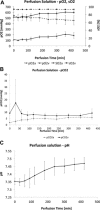

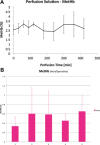




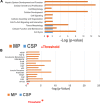
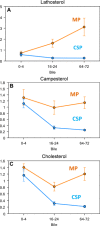

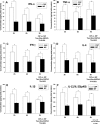
Similar articles
-
Renal Protection Against Ischemia Reperfusion Injury: Hemoglobin-based Oxygen Carrier-201 Versus Blood as an Oxygen Carrier in Ex Vivo Subnormothermic Machine Perfusion.Transplantation. 2020 Mar;104(3):482-489. doi: 10.1097/TP.0000000000002967. Transplantation. 2020. PMID: 31568396
-
Oxygen consumption during hypothermic and subnormothermic machine perfusions of porcine liver grafts after cardiac death.J Artif Organs. 2018 Dec;21(4):450-457. doi: 10.1007/s10047-018-1063-0. Epub 2018 Jul 25. J Artif Organs. 2018. PMID: 30046934
-
Improved machine perfusion preservation of the non-heart-beating donor rat liver using Polysol: a new machine perfusion preservation solution.Liver Transpl. 2005 Nov;11(11):1379-88. doi: 10.1002/lt.20502. Liver Transpl. 2005. PMID: 16237689
-
Machine perfusion for liver transplantation: A concise review of clinical trials.Hepatobiliary Pancreat Dis Int. 2018 Oct;17(5):387-391. doi: 10.1016/j.hbpd.2018.06.003. Epub 2018 Jun 26. Hepatobiliary Pancreat Dis Int. 2018. PMID: 30352672 Review.
-
Emerging concepts in liver graft preservation.World J Gastroenterol. 2015 Jan 14;21(2):396-407. doi: 10.3748/wjg.v21.i2.396. World J Gastroenterol. 2015. PMID: 25593455 Free PMC article. Review.
Cited by
-
Hemoglobin-based Oxygen Carriers: Current State-of-the-art and Novel Molecules.Shock. 2019 Oct;52(1S Suppl 1):70-83. doi: 10.1097/SHK.0000000000001009. Shock. 2019. PMID: 31513123 Free PMC article. Review.
-
The dawn of liver perfusion machines.Curr Opin Organ Transplant. 2018 Apr;23(2):151-161. doi: 10.1097/MOT.0000000000000500. Curr Opin Organ Transplant. 2018. PMID: 29324518 Free PMC article. Review.
-
Oxygen Transport during Ex Situ Machine Perfusion of Donor Livers Using Red Blood Cells or Artificial Oxygen Carriers.Int J Mol Sci. 2020 Dec 28;22(1):235. doi: 10.3390/ijms22010235. Int J Mol Sci. 2020. PMID: 33379394 Free PMC article. Review.
-
Normothermic machine perfusion of donor livers without the need for human blood products.Liver Transpl. 2018 Apr;24(4):528-538. doi: 10.1002/lt.25005. Liver Transpl. 2018. PMID: 29281862 Free PMC article.
-
Gradual rewarming with a hemoglobin-based oxygen carrier improves viability of donation after circulatory death in rat livers.Front Transplant. 2024 Jul 1;3:1353124. doi: 10.3389/frtra.2024.1353124. eCollection 2024. Front Transplant. 2024. PMID: 38993754 Free PMC article.
References
-
- Guarrera JV, Henry SD, Samstein B, et al. Hypothermic machine preservation in human liver transplantation: The first clinical series. Am J Transplant 2010; 10: 372–381. - PubMed
Publication types
MeSH terms
Substances
Grants and funding
LinkOut - more resources
Full Text Sources
Other Literature Sources

